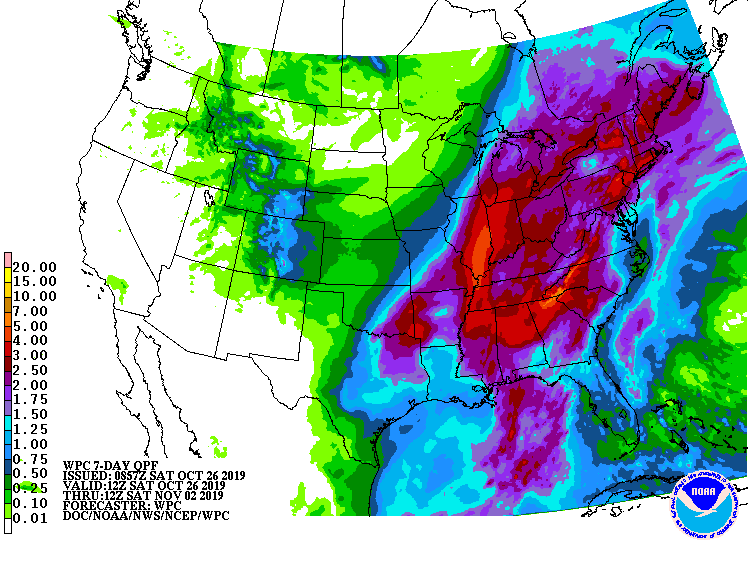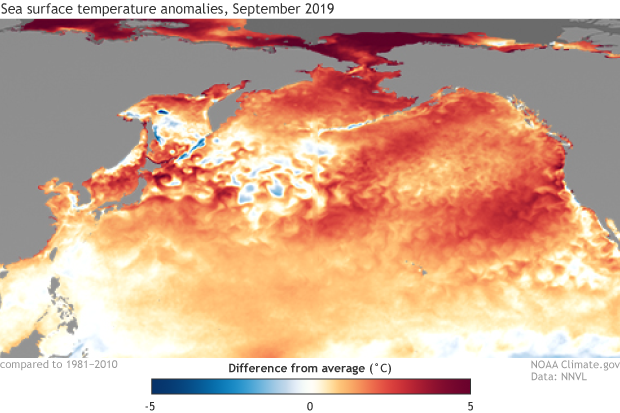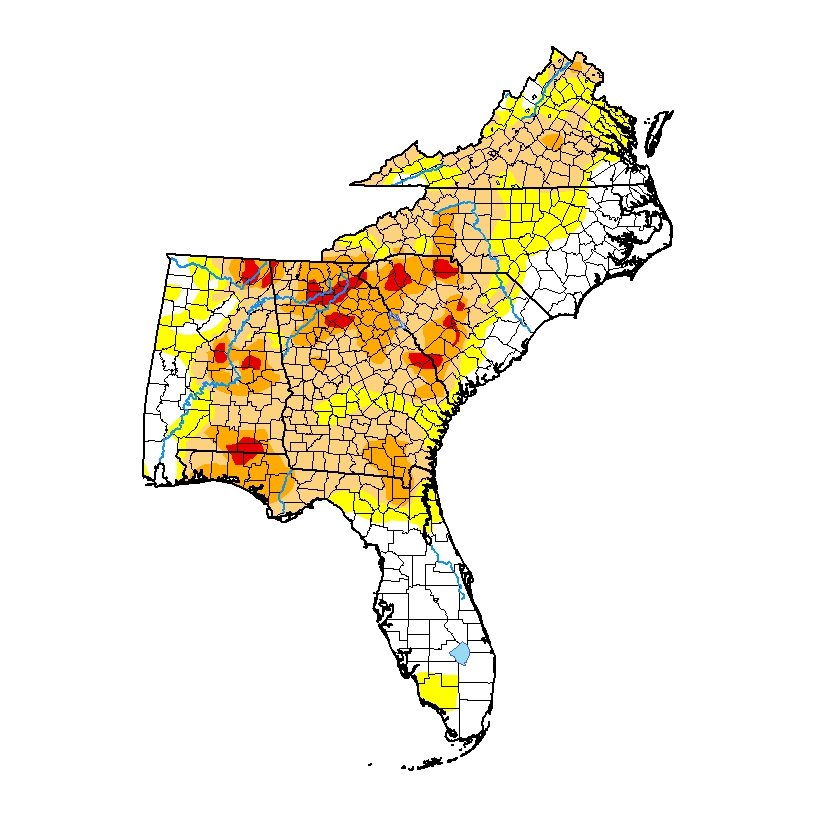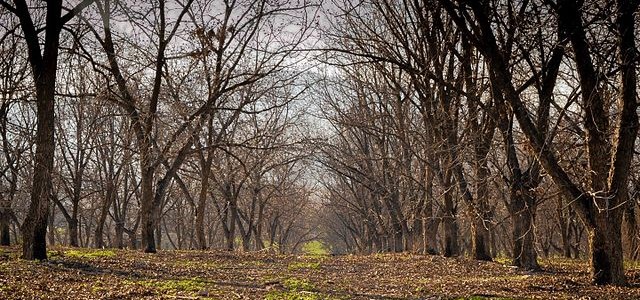-

As expected, the remains of Olga, which briefly formed in the Gulf of Mexico before merging with a front and becoming a post-tropical remnant, will continue to bring heavy rains to northwestern parts of the Southeast today and tomorrow before moving out. Another front coming through early next week will bring more widespread rain to…
Posted in: Climate outlooks -

The fairly disorganized area of convection in the western Gulf of Mexico has pulled together enough to form Tropical Storm Olga. Olga is expected to last for only a few hours before it merges with a cold front and becomes a remnant depression. Rain from Olga has been affecting Alabama and northwest Georgia today, but…
-

When we look at sea surface temperatures in the Pacific Ocean, we are commonly looking for signs of El Niño or La Niña, which can greatly affect the climate of the Southeast, especially in winter. But recently the most interesting part of the Pacific has not been near the equator where we usually see ENSO…
-

The rain from a slow-moving warm front, coupled with the rain from TS Nestor last weekend, has significantly knocked back the drought that has been expanding across the region. There are still a number of pockets of severe (D3) drought scattered across the area, but there have been significant reductions in many places too. In…
Posted in: Drought -

A joint project between the Flint River Soil and Water Conservation District (FRSWCD), the Natural Resources Conservation Service (NRCS) and UGA will develop new tools to optimize irrigation water management for pecan production in southwest Georgia and provide outreach to pecan producers in the region, according to a story in Morning Ag Clips earlier this…
-

Even though Georgia is not one of the top ten pumpkin producing states, we still have about 900 acres in pumpkin production each year. I was interested to read this article in Morning Ag Clips describing pumpkin production in the state. I learned that most pumpkins are grown in the northern part of the state…
-

As I was looking at my Facebook feed, it reminded me of a photo I took out my office window in 2014 showing the trees outside in their fall colors. This year, the color is barely showing yet. A lot of that can be attributed to the extremely warm September we had. Here are a…